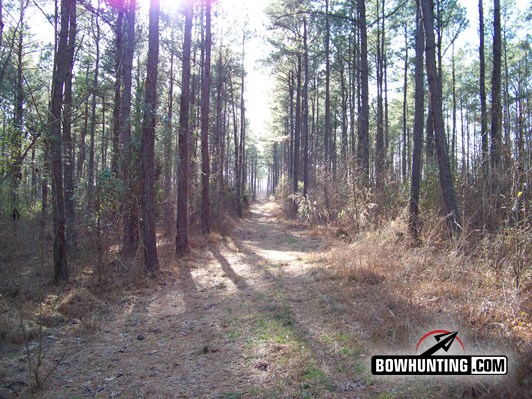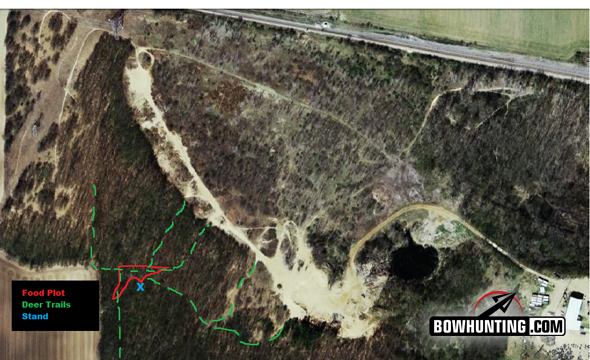LAST UPDATED: May 8th, 2015
One of the hottest topics in the hunting industry today is Food Plots. Some hunters will argue that they are absolutely necessary to kill big bucks; others will say you don’t need them. Despite the fact that there is no magical big buck potion, food plots definitely have their place in deer management and can drastically increase a hunter’s success….IF they are done right. For a bowhunter who may be a novice when it comes to food plots, trying to figure out everything on your own can be a nightmare. For example, what to plant, where to plant, and the never ending when, how, and why’s associated with growing food plots can drive a person crazy. Quite often, these are questions many landowners and managers don’t have answers to. As a result, many guess or take the advice of friends. This trial and error method produces mixed results because not everything works in every situation. Hunters also have many misconceptions about food plots; such as you must have access to large equipment to be successful. This isn’t true in most cases. The only thing a hunter really needs is a determined attitude and the patience to do things right. So, if you happen to be one of the many bowhunters who have wanted to start your very own food plot, but didn’t because you thought you couldn’t do it for one reason or another—-then this article is for you. Let’s begin with the basics….the EXTREME basics.
Establishing an intimate knowledge of your hunting area will go a long way toward reaching your management goals
It has been said that you must have long term goals to prevent frustration with short term failures. This is definitely true when it comes to habitat management. Planning and forethought on the part of the hunter will have an immeasurable effect on the success of his/her food plots. Because every piece of property is different, there is no food plot strategy that works for everyone. In order to be successful, one must carefully examine the needs and capabilities of his/her particular property before starting. The first question a hunter must ask himself is WHY do you want a food plot? Is it to attract more deer to your property, or perhaps grow bigger bucks? Maybe it is to hold deer on your property by providing them with added nutrition. Before you plant the first seed, take a minute and write down what your short term and long term goals for the property are. This will help determine the starting point for your management plan because not all hunters want the same things, or can realistically achieve the same goals. For example, in the Southeastern part of the country, growing a “Booner Buck” is not exactly an attainable goal. Many hunters in that region would be happy to simply see more deer while they are hunting. When it comes to your own wants and needs, think about what it is you ultimately wish to accomplish on your property. Then, evaluate what your property’s current short term and long term potential is; writing down its strengths and weaknesses. This will help you come up with a list of goals for the management of the property.
Mineral Sites are an excellent means for not only attracting deer, but also helping bucks maximize their antler potential.
Once you have determined your goals, you can begin formulating a plan to carry them out. The first thing that I like to do on a property is find out what kind of deer herd I am dealing with. Although walking the property will give me clues about terrain, available forage, cover etc, there is no way I can accurately inventory the deer herd on a farm without added help. One of the best tools for helping you do this is a good trail camera. It will serve as your eyes in the woods….24 hours a day. When selecting a site to place a camera, I always pick an area where I can monitor and check it with minimal pressure to the local deer. This means placing my camera on the fringes of the property; places I can easily drive to or get very close to with my truck, thus minimizing the amount of human scent I leave in the area. This is a key step because the less intrusion I make, the more apt the deer will be to use the area. If placing minerals or attractants is not legal in your state, then pick a location that gets a lot of natural traffic, such as water holes, openings in fences, or where fence-rows meet the woods. If putting out attractants is legal in your area, then by all means do so. This will increase the number of deer images you capture on your camera. Putting out minerals is also the easiest and cheapest way to establish deer numbers and develop a management plan on your property. After that, the only decision you will have to make is do you want to simply attract more deer to your property or are you interested in growing bigger and healthier deer? I know that is a simple question, but remember, we’re taking baby steps here. If pure attraction is what you want out of your property, then a product such as Monster Raxx’s Whitetail Magnet will work great. It is a highly concentrated oil based attractant and deer find the sweet smell irresistible. On the other hand, if you want to attract deer, while at the same time, benefit them nutritionally, a product such as Monster Raxx’s Trophy Minerals would be a suitable choice. This particular product still has some salt to attract deer, but has many different macro and trace minerals that will help with antler production and doe lactation which will lead to healthier fawns. Mineral sites serve several roles to a hunter/ land manager. In addition to immediately attracting deer to your area and providing them with a nutritional boost, they help you inventory and keep track of your deer herd by documenting each visitor to the site. Plus they require very little effort on the hunter’s part. I can’t think of a product that gives a hunter more bang for his buck!
This plot was selected to be a “kill plot” inorder to intercept cruising bucks during the rut.
Once you have completed your mineral site setup, you can then begin to evaluate your property’s food plot potential. The most important thing to remember is that without a clear picture of what your farm needs or what the conditions are, no one can offer a “catch-all” solution that will work. The number one reason for food plot failure is improper site and/or forage selection. I cringe when I hear a plethora of different answers to questions regarding “what to plant” or “what to do” to improve a particular plot. While suggestions such as plant clover, plant beans, or add lime CAN be good, first and foremost, site selection and “plot purpose” must be taken into consideration.
For example, currently I am working on a new plot on a piece of property that presents some unique challenges. I have hunted this particular farm for seven seasons. The entire southwestern corner of the property is roughly made up of 20 acre’s of impenetrable thicket; so thick that I can’t walk through it, much less hunt it. The northeast section of this farm contains a swamp and holds a lot of deer. The deer feed to the south in large agricultural fields. The swamp is the sanctuary on the property, so I don’t hunt there. The center of the farm has little timber and is difficult to hunt. I have put in a couple of plots in the center to provide late season forage for the deer. This year I have decided to utilize the thicket that I haven’t been able to do anything with.
Treestand view from the “kill plot”.
I have basically cleared out a section of the thicket where several trails crisscross and planted about a 1/3 acre “kill plot” in this section. I plan to utilize this particular area during the rut when I hope to capitalize on bucks cruising from North to South in search of does. The addition of a plot surrounded by security cover will give wary bucks a spot to stop briefly and scent check for a receptive mate. Also, access to this location is perfect. With a North or Northeast wind I will be able to walk up the tree-line to the west and climb into the stand without alerting any deer to my presence. I cannot stress enough the importance of a covert access when hunting a food plot, or anywhere for that matter. A good spot with perfect access is better than a great spot with bad access. If the deer know you are hunting them the greenest plot in the world won’t do you any good. Once you have selected a location, you must decide on what type of forage to plant. Before doing this please remember to do one thing……A SOIL TEST! This information will prove to be invaluable. Not only will it provide you with soil PH, it will tell you soil type and nutrient levels as well. This will help you determine what kind of plot will grow the best on your land.
After a site has been selected for your new food plot, it is vital to conduct a soil sample test.
In the case of the new plot on my farm, the soil test indicated my PH was low, and the soil was sandy, but organic matter was high. This is fairly typical of plots in the woods that have never been cultivated. I wanted a clover plot, but typically clovers do better in heavier soils because they need a good amount of moisture. Based on the information in my soil test, I decided on a blend of annual clovers and brassicas, as well as alfalfa and chicory. I want a plot that will have peak attractiveness during the rut; when I plan to hunt it. The clovers and brassicas will provide that attractiveness, while the alfalfa’s large roots will help hold moisture that the soil won’t; which allows the clover to attach to and utilize the water in its root system.
There are forages that would be easier to establish, but again I want peak attraction to be late October through November. The annual clovers will provide a quick green-up and will give the plot attractiveness while the lime builds up in the soil to raise the PH. Once the PH reaches 6.5, hopefully by next year, then I will plant a perennial.
Success is failure turned inside out. No matter what your goals are for a property, careful planning will make all the difference in the success of your food plots. It isn’t rocket science by any means, and anyone who wants to do it can. All it takes is effort, determination, and creativity. Just remember that to reach a destination, you must first know where you are going. Make a list of management goals for your property, stick to them, and don’t cut any corners achieving them. If done correctly, food plots will be another deadly weapon in your arsenal of tactics. In my next article we will discuss soil testing a little more in-depth and move forward with the over-all food plot construction.








